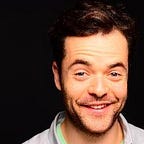The rise of Relational Design
What if we designed anything with relationships in mind?
“Strong relationships are not a frilly accessory in a happy neighbourhood, a thriving school, an effective health service, a flourishing business, or a successful and cohesive society. They are the making of it all. Working towards a world of good relationships, wherever we are and whatever we do, is simple common sense. We want to make it common practice.“ David Robinson, Relationships Project
I see a new field emerging that we might call Relational Design. It is natural to have a relational lens when working with communities, groups, networks. That’s the obvious use case. But now a new field is emerging that applies the same principle to, well, anything. What if you used a relational approach to how you design cities, how you create housing projects, how you run a non-profit, how you strengthen a neighborhood, or how you design healthcare in a more holistic way?
This nascent design approach shares a few assumptions
- Relationships are not just a means to an end, but valuable in itself (said most beautifully by David Robinson’s quote above).
- Relationships are a tremendous and highly under-leveraged source of transformation and wellbeing. Things, services, offerings, systems simply become better when we design them in a relational way.
Here are some examples of Relational Design
- I’ve been hugely inspired by the work, language and approach of the Relationships Project: “Our mission to make it easier for every organisation, service and place to put relationships at the heart of what they do”. They are doing work, for example, on how to run a City Council in a relational way, on how to be an active neighbor, or on how to “build a better London by building better relationships” (“Imagine a city where relationships were the central operating principle. What would change?”).
- “A Call to Connection”: a primer by the Einhorn Collaborative on why a relational culture matters (created by Sacred Design Lab, with support from Greater Good Science Center at Berkley). I found the examples especially notable, for example on the role of a relational approach to develop a housing project in Indianapolis, or about relational practices at hospitals in NYC or about the relational approach of a criminal defense lawyer.
- Also by Einhorn: Rethinking the patient — care giver relationship.
- I see a lot of great examples emerging on how to build thriving neighborhoods in a relational way, for example GatherFor in the US, the Cares Project in the UK, Participatory City in two boroughs of London, or Eretzir in Israel.
- The Weaving Lab is taking this relational approach not just to weaving groups, but weaving together all kinds of organizations and systems.
A very new or a very old field?
When you look at the actual practices, none of them are rocket science, none of them are actually new. But maybe that’s exactly the point? The Einhorn primer puts it beautifully: “Most likely, none of these practices will be radically new to you. But it is precisely the fact that they are radically old that makes them powerful and accessible to all of us”. It seems as this field matures, our job is not to invent, but rather rediscover old practices and apply them to today’s contexts.
Is this how we’ll change culture?
I work in service of a future where our culture values relationships. Many of us sense how capitalism has stripped most relational elements out of our lives and many of us crave a sense of true belonging and connectedness. Yet how do we get there? I sense that by designing anything with a relational lens we start to change offerings, institutions, systems and eventually culture.
What do you think?
How does this resonate? Where are you seeing Relational Design emerging outside of the traditional community space? I’d be so grateful to hear your thoughts and reflections in the comments.
— —
Thank you
A big thank you to the people who are bringing this “radically old” practice back, especially to the team at the Relationships Project and all the other practitioners mentioned.
Interested in getting regular community building insights in your inbox?
Every few weeks we send out a short email with 3–5 of our favorite insights, blog posts and articles about building meaningful communities. If you care about bringing people together, this might be for you. Sign up here.
